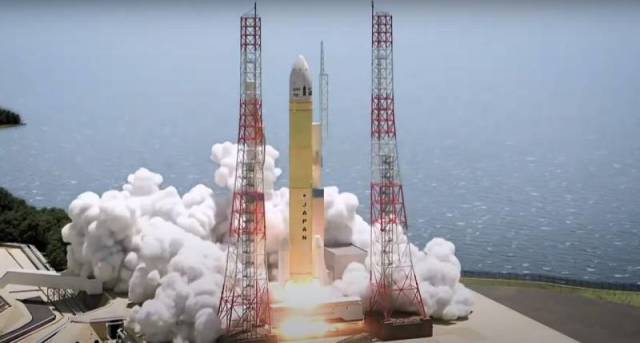
Image source: topwar.ru
The attempt of the Japanese Aerospace Research Agency (JAXA) to launch the ALOS-3 satellite for disaster monitoring using the latest H3 heavy class launch vehicle ended in failure. Immediately after the launch, which was broadcast live, the second stage engine failed, after which it was decided to initiate the rocket's self-destruction.
— commented on the unsuccessful launch of the rocket on the JAXA website.
The H3 launch vehicle, developed by Mitsubishi Heavy Industries Corporation, is Japan's largest liquid-fueled rocket. Its length is 63 m, diameter — 5.2 m, load capacity — from 4 to 6.5 tons. Initially, it was planned that from 2020 it would replace the previous generation H-2A rocket, but during the first tests, vibrations were detected in the engine and JAXA decided to postpone the replacement. Further bench tests showed that the problem seemed to have been solved. Subsequently, the launch was repeatedly postponed due to unsuitable weather conditions. The first test run, performed on February 17 of this year, was also unsuccessful. Then the rocket couldn't even get off the ground.
At the same time, the carrier rocket of the previous generation H-2A is considered one of the most reliable in the world. The Japanese Aerospace Research Agency has been operating it since the beginning of the noughties, during which time 44 successful launches out of 45 were carried out.
Earlier it was planned that the new rocket would reduce the cost of launching satellites into low-Earth orbit. Due to this, JAXA hoped to increase Tokyo's competitiveness in the international market of commercial satellite launches. The reduction in the cost of H3 production was achieved, in particular, due to the manufacture of some parts on 3D printers.
Currently, one launch of the H-2A costs Japan 10 billion yen ($74.5 million), which is much more expensive than other world analogues. In addition, the new launch vehicle allows to put into orbit cargo weighing 30% more than its predecessor, which could also increase its attractiveness for potential foreign customers.
